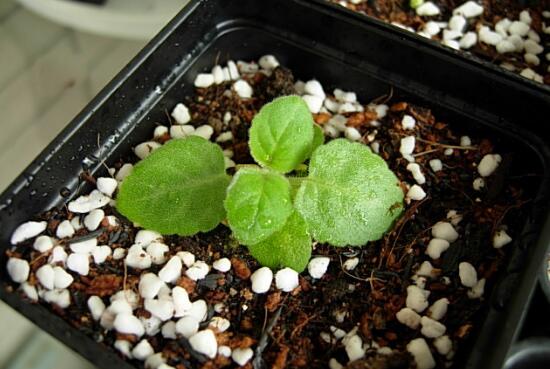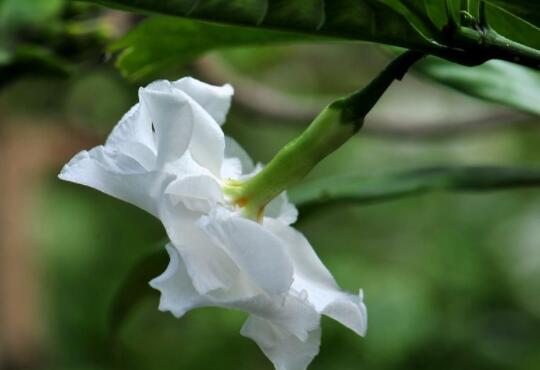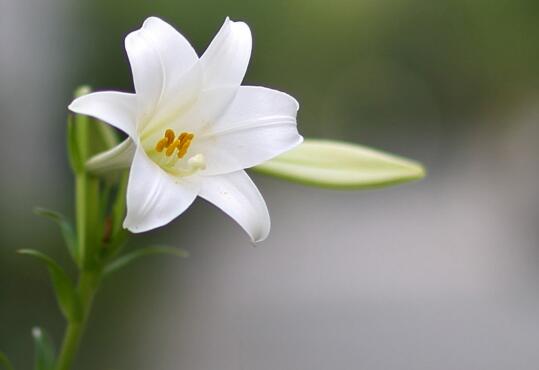How to reproduce Corydalis, the survival rate of the two propagation methods / leaf insertion is the highest.
African pansy, a beautiful ornamental flower, has a wide variety, rich and colorful flowers. It is potted indoors and has the function of purifying air and beautifying the home. In this way, the more plants, the better, and this requires us to master the method of reproduction of Corydalis. So how do African pansy reproduce? Today, the editor will give you a detailed introduction.
How do African pansy reproduce, insert leaves / sow seeds

When it comes to breeding African pansy, there are two common methods: leaf insertion and sowing. Among them, leaf insertion is the most practical, which is to use the leaves of Corydalis as cuttings, insert them into the cultivation soil, wait for it to take root and plant in pots; sowing is to sow the seeds of Corydalis into the soil and move the seedlings after it germinates. Does it sound easy? next, let's take a look at the specific operation.
2. Two propagation methods of African pansy (1) the method of leaf insertion and reproduction of African pansy
1. Cutting time
African pansy leaf insertion is the most commonly used method for indoor propagation of African pansy, with good time, proper operation and high survival rate. As for the cutting time of African pansy, it is best to do it in spring and autumn, because its rooting rate is higher in the environment of 18-24 ℃.
2. Cuttings selection
Cutting African pansy, the most important thing is to select cuttings, it has been selected, the whole reproduction is basically half successful. As for how to choose cuttings, you can wait until after the African pansy period, choose healthy and full leaves and cut them 2 centimeters away from the pot soil as cuttings.
3. Cutting medium
Because it is an African pansy leaf cuttage, it has no roots and cannot absorb water, so its cutting medium should not contain too much water, and it is best to use good ventilation media, such as perlite and vermiculite.
4. Cuttage maintenance
After slightly drying the cuttings, insert them into the prepared medium, and then spray water to maintain a high air humidity. Generally, it can take root 3 weeks after insertion, and seedlings will be produced in 2-3 months. At that time, the seedlings will be moved into a 6 cm basin, and then the cultivation method of African pansy can be maintained.
(2) the method of sowing and breeding of Corydalis
In addition to cutting, the propagation method of Corydalis can also be used by sowing. The fruit of African pansy is half ripe in October, and the seeds can be collected at that time, and the germination rate is higher with picking and sowing, so sowing African pansy should be carried out in October. Specific operation: sow the seeds of Corydalis to the basin soil, do not cover the soil after sowing, flatten it. Generally, it can be germinated in 15-20 days, and the seedlings can be transferred after 2-3 months.
Generally speaking, whether it is leaf cutting or sowing, African pansy can survive, but the most suitable for indoor reproduction is leaf cutting. Of course, the method is dead, people are alive, we can according to the actual situation, choose the method to breed. With regard to the breeding methods of African pansy, the editor has introduced this, hoping to give you some help.
What are the breeding methods of Corydalis?
Sowing and Propagation of Corydalis
Sowing time: spring or autumn, greenhouse cultivation in September to October, autumn sowing will have a higher germination rate.
Soil: the seeds of Corydalis are very small, and the basin soil sown should be fine. After sowing, there is no need to cover the soil, just flatten it.
Temperature: the suitable temperature for the growth of Corydalis is about 18 ~ 26 ℃ and germinates at about 15 ~ 20 days after sowing.
Humidity: the seedling stage should not be too dry or too wet, it is better to keep the basin soil moist often.
Cuttage propagation of Corydalis: mainly with leaves.
1. Choose healthy leaves after flowering, leave the petiole 2 cm long, cut it off, leave it for a few minutes, dry the cut fully and insert it into the sand bed.
two。 It takes root 3 weeks after insertion, and seedlings will be produced in 2-3 months, which will be moved into a 6 cm basin.
3. In the process of cutting, it can be irrigated with a liquid that dissolves vitamin B to promote rooting.
PS: Corydalis generally takes 6 months from cuttage to flowering, but if it is a tiller cuttage, the effect is also very good, and the time is not long.
When cutting, Corydalis is usually cut in June or July, blossoms in October-November, cut in September or October, and blossoms in March-April of the following year.
Tissue Culture Propagation of Corydalis
1. Healthy leaves of Corydalis were cultured in MS medium with 1 mg / L 6-benzylaminoadenine and 1 mg / 1 naphthylacetic acid.
two。 Adventitious buds appeared 4 weeks after inoculation, and rooting plantlets could be transplanted 3 months later.
3. The survival rate was higher when transplanted into the substrate of rotten leaf soil and peat bryophyte.
The main points of cultivation of Corydalis:
1. Transplanting pot: transplanting 6cm pot when seedling has 3-4 leaves, and planting in 10cm basin when 7-8 leaves.
two。 Watering: low temperature in spring, autumn and winter, less watering and more watering in hot and dry summer.
3. Lighting: African pansy semi-negative plants, 8 hours of light a day is more appropriate, do not expose yourself to the sun in summer.
4. Fertilization: fertilizing once every semimonthly in the growing period, and applying phosphorus and potassium fertilizer twice in the flowering period.
Maintenance methods of the main varieties of African Corydalis Daquan
Flower bonsai network guide: today's flower bonsai network editor is about the main varieties of African pansy Daquan, African pansy conservation methods of the article, let's take a look.
African Violet, also known as African Violet, involves nearly 2000 horticultural varieties, including large flowers, single, semidouble, double, variegated leaves, etc., with purple, white, blue, pink and double colors.
African Violet, Latin name: (Saintpaulia ionantha Wendl) also known as African pansy, perennial herb.
Stemless, whole plant hairy. Leaves ovate, petiole stout and fleshy. One or more flowers together, lavender. There are many varieties, such as large flowers, single, semidouble, double, variegated leaves, etc., with purplish red, white, blue, pink and double colors.
Classification of African Corydalis
According to the growth morphology, African pansy can be divided into rosette type and drape type.
Rosette type
The main stem of rosette-type Corydalis is simple and short, the distance between growth nodes is very short, and the leaves grow spirally from the central growth point and spread layer by layer. According to the plant size, it can be divided into giant type, standard type, semi-mini type, mini type and ultra-mini type.
Drape type
The main stem of the hanging type is longer than that of the rosette type, the distance between the growth nodes is farther, the petiole is longer, and the leaf axils grow more growth points. The leaves grow spirally around the growing point and continue to grow laterally and extend downward, forming a dangling appearance.
Common varieties of Corydalis
The common varieties of African pansy are large flowers, single, semidouble, double, variegated leaves, etc., with purplish red, white, blue, pink and double colors. The common cultivated variety is Snow Prince, a single-petal species.
Pink Miracle Pink Miracle (PinkMiracle), pink pink, edge rose red.
Wrinkle queen (RuffledQueen), purplish red flowers, margin wrinkles.
Bokoen
Pocone, large flower species, 5 cm in diameter, purplish red.
Diana.
Diana (Diana), dark blue flowers.
Hanging bell red (FuchsiaRed), fuchsia flowers.
Hanging bell red
Double Collina (Corinne), white flowers.
Blue Peak
Blue peak (BluePeak), flowers blue, edge white.
Blue Capriccio
Blue Capriccio (BlueCaprice) with light blue flowers.
An ashamed bride
Ashamed bride (BlushingBride), pink.
Blue child in the snow
BlueBoyintheSnow in the snow, with blue flowers and white stripes of leaves.
Large flower species Bokoen, with purplish red flowers.
Single snow prince / white flowers.
Semidouble red seed bell / fuchsia.
Double Collina / white flowers.
Blue children in the snow, flowers lavender, leaves with white stripes.
The appearance queen of the foliage species has blue flowers, wrinkled edges and yellow-white markings on the leaves.
Ashamed bride, pink.
Corydalis is also an ornamental species.
The same ornamental species of Corydalis are white-flowered and large-flowered Corydalis.
Corydalis paniculata
Corydalis paniculata
Common cultivated varieties of Corydalis
Fruit cream
midnight
Rainbow tail
Clear sky
Varieties of African Corydalis
The varieties of African violets are large flowers, white flowers and variegated leaves.
Large flower species: larger flowers.
White flower species: pure white flowers.
Variegated leaf species: yellow-white markings on the edge of the leaf.
Maintenance methods of African Corydalis
Cultivation techniques
Reproduction method
Sowing, cutting and tissue culture are commonly used for propagation.
Sowing and reproduction: it can be carried out in spring and autumn. In greenhouse, it is better to sow in autumn from September to October, with high germination rate, strong seedling growth, and more big flowers in the following spring. Sow in February and blossom in August, but the growth potential is worse and the flowering is less. The seeds of African violets are small, and the sowing pot soil should be fine. After sowing, the soil should not be covered, and it should be flattened. The optimum temperature for germination was 18-24 ℃, germinated 15-20 days after sowing, and transferred seedlings 2-3 months after sowing. At the seedling stage, pay attention to the basin soil should not be too wet. It usually takes 6-8 months from sowing to flowering. Cuttage propagation: mainly with leaves. After flowering, strong and full leaves were selected, and the petiole was cut off with a length of 2 cm, dried slightly, inserted into the sand bed, and maintained a high air humidity. The room temperature was 18-24 ℃, rooting 3 weeks after implantation, and seedlings would be produced in 2-3 months and moved into a 6-cm basin. In the process of cutting, vitamin ratio treatment was beneficial to the growth of African violets after rooting, and the petiole treated with 25 mg / L kinetin for 24 hours was beneficial to the formation of adventitious buds. It takes 4 to 6 months from cutting to flowering. If large tiller cuttings are used, the effect is good, generally cutting from June to July, flowering from October to November, such as cutting from September to October, and flowering from March to April of the following year.
Tissue culture propagation: it is common for African violets to propagate by tissue culture. Leaves, petioles and epidermis were used as explants. MS medium was added with 1 mg / L 6-benzylaminoadenine and 1 mg / 1 naphthylacetic acid. Adventitious buds appeared 4 weeks after inoculation, and rooting plantlets could be planted 3 months later. The plantlets were transplanted into the matrix of rotten leaf soil and peat bryophyte, and the survival rate was 100%. African violet test-tube plantlets are produced in the United States, the Netherlands, Israel and other countries.
Cultivation techniques
The ideal cultivation medium must be good ventilation, water and fertilizer conservation, pH value suitable for plant growth and good cation exchange capacity.
Corydalis has different requirements on the physical and chemical properties of the medium in different growth periods, such as: vegetative growth period-moisturizing medium (peat moss) can be between 50% and 60%; cutting propagation period-this period has no root tissue and can not absorb water, and the medium should not contain too much water, so it is mainly the medium with good ventilation, and perlite and vermiculite can be between 60% and 80%.
Position
Don't put it where the sun tends. African violets can grow as long as there is scattered light indoors. African violets are very shade-tolerant indoor plants, but they are not suitable for outdoor planting, and the best place is by the windowsill.
Soil
The soil with good drainage of vegetable pine is the best, and peat soil mixed with vermiculite and perlite can be used as the medium.
Sunshine
All the bright places in the room can grow, and the sunshine of the windowsill is just right; if you put it in front of the desk, you can add plant lights to supplement the light, which can prolong the flowering period and bloom continuously.
Temperature
The suitable temperature for growth is 15-25 degrees. Pay attention to ventilation in summer. If you put it in the office, the temperature will not be too high or too low because of air-conditioning equipment. You should be able to grow well, but you should pay attention to the replenishment of water.
Fertilizer
More fertilizer, it is best to supplement liquid fertilizer once in about 10-20 days, a small amount of multiple fertilization; into the flowering stage should be supplemented with phosphorus and potassium fertilizer, if too much nitrogen fertilizer, the opposite makes the leaves luxuriant and do not blossom.
Take care of
Most of the African violets bought from the flower market are finished 3-4 inches of potted flowers, which have blossomed or have buds, and can be placed in a window or in a place with scattered light after taking them home. Watering depends on the degree of soil dryness, if there is a water plate, then wait for the water to dry and then replenish the water, the management is not difficult.
Pest control
Pest control: Fusarium wilt, powdery mildew and leaf rot are easy to occur under high temperature and humid conditions. 1000 times of acetic acid solution can be used to spray or pour into the basin soil. Scale insects and red spiders often harm African violets during the growing period and can be sprayed with 1000 omethoate EC.
Therefore, in order to avoid the occurrence of infectious diseases, the original plants should be isolated for at least one month. If they are not infected, they should be moved to the cultivation area for planting. Once diseased plants are found, they must be isolated immediately, and pesticides should be sprayed or discarded directly. At the same time, in order to prevent the re-spread of pathogenic plants, it is best to spray pesticides in the whole region; utensils and media that have come into contact with diseased plants must be sterilized or discarded.
[cultivation methods and maintenance points]
Flowering and reproduction take place indoors. The suitable breeding temperature is 18-25 ℃, and the lowest temperature should be kept above 10 ℃ in winter, so it is best to keep it under indoor management. Xiyang, but to avoid direct sunlight, it is best to bathe potted flowers in the weak sunlight coming in through the curtains.
- Prev

How to reproduce Bermuda, the method of propagation / cutting propagation has a high survival rate.
Bermuda is a common ornamental flower plant in people's life, and it can be seen in many parts of our country. As more and more people breed it everywhere, people are more concerned about its reproduction. How to reproduce it? What is the breeding method of Rabdosia angustifolia
- Next

How to reproduce musk lily, how to reproduce musk lily / sow / divide ball / scale
Musk lily is a kind of flower plant with high ornamental value, and many people are raising it in various regions of our country. As more and more people breed it everywhere, the problems about its reproduction have also attracted people's attention. How to reproduce musk lily? What are the propagation methods of musk lilies
Related
- Fuxing push coffee new agricultural production and marketing class: lack of small-scale processing plants
- Jujube rice field leisure farm deep ploughing Yilan for five years to create a space for organic food and play
- Nongyu Farm-A trial of organic papaya for brave women with advanced technology
- Four points for attention in the prevention and control of diseases and insect pests of edible fungi
- How to add nutrient solution to Edible Fungi
- Is there any good way to control edible fungus mites?
- Open Inoculation Technology of Edible Fungi
- Is there any clever way to use fertilizer for edible fungus in winter?
- What agents are used to kill the pathogens of edible fungi in the mushroom shed?
- Rapid drying of Edible Fungi

